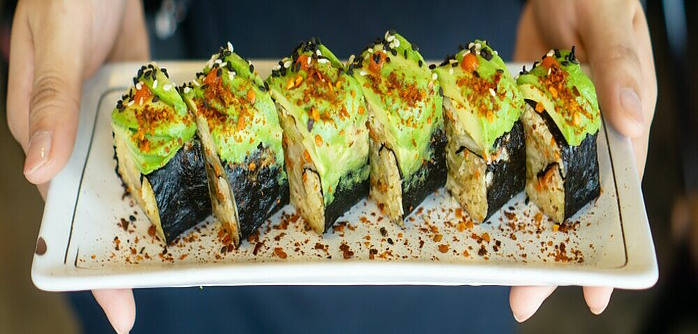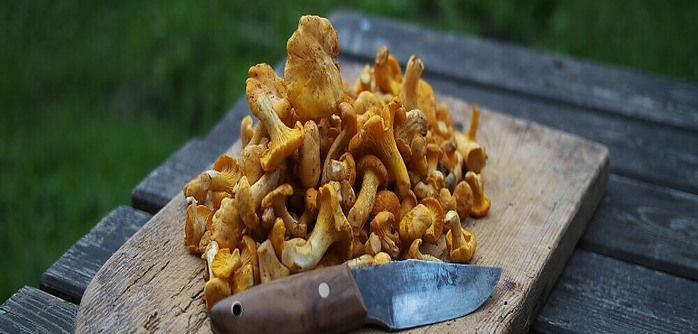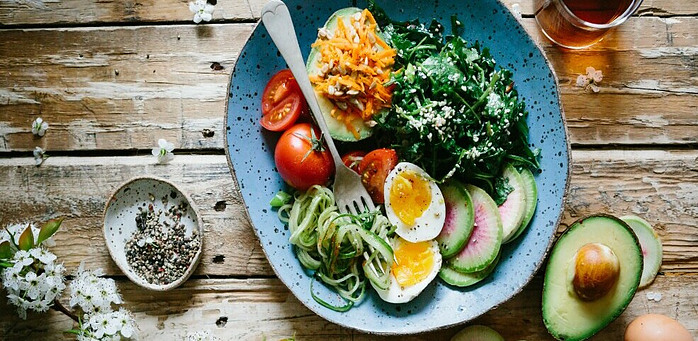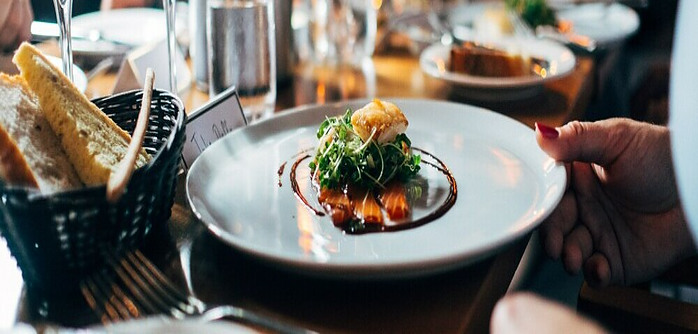 My exploration into flavors began with a curiosity about umami, often referred to as the fifth basic taste. I was fascinated by how this distinct flavor stood shoulder to shoulder with sweet, salty, sour, and bitter. The term itself, ‘umami’, originates from the Japanese language, embodying the essence of a ‘delicious’ or ‘pleasant taste’. More than a century ago, in 1908, umami was identified by Japanese chemist Kikunae Ikeda, who recognized the unique taste of glutamate in seaweed broth.
My exploration into flavors began with a curiosity about umami, often referred to as the fifth basic taste. I was fascinated by how this distinct flavor stood shoulder to shoulder with sweet, salty, sour, and bitter. The term itself, ‘umami’, originates from the Japanese language, embodying the essence of a ‘delicious’ or ‘pleasant taste’. More than a century ago, in 1908, umami was identified by Japanese chemist Kikunae Ikeda, who recognized the unique taste of glutamate in seaweed broth.
Understanding umami requires a bit of a history lesson. Ikeda’s meticulous research led to the categorization of umami as a fundamental taste, bringing a newfound appreciation for certain foods and their depth of flavor. To my palate and to many others, umami is that savory, meaty, and brothy sensation that lingers, persuading us to take another bite.
The intrigue of umami lies in its power to round out the taste of a dish, providing richness and complexity that’s hard to pinpoint yet undeniably present. It works behind the scenes, enhancing the flavors of simple ingredients and transforming the whole meal into a more gratifying experience. This subtlety is what makes it an essential player in the culinary arts.
Now, the logic behind umami isn’t merely anecdotal; it’s grounded in science. Our taste buds are equipped to recognize umami just as clearly as they do the other four basic tastes. This recognition is what has steered gastronomy into a fresh frontier, challenging chefs and home cooks alike to consider umami as they craft their dishes.
The narrative of umami doesn’t end with a singular flavor—it’s the beginning of a more in-depth discussion about its sources, which I will delve into in the next section. The rich tapestry of foods that provide umami will offer a glimpse into why this flavor is indispensable in culinary practices around the globe.
The Essence of Umami: Identifying Its Source in Foods
 At the heart of umami lies glutamate, an amino acid that is pivotal in creating the savory flavor profile that characterizes this unique taste. Glutamate acts as the molecular trigger, firing up our umami taste receptors and sending those rich, savory signals to our brains.
At the heart of umami lies glutamate, an amino acid that is pivotal in creating the savory flavor profile that characterizes this unique taste. Glutamate acts as the molecular trigger, firing up our umami taste receptors and sending those rich, savory signals to our brains.
Tomatoes are a prime example of a natural and healthful source of glutamate. As they ripen, their glutamate levels rise, turning a simple tomato into a powerhouse of umami. Similarly, mushrooms, particularly shiitake mushrooms, are packed with natural glutamate, explaining why they make such a distinct impact in vegetarian dishes commonly relying on meat for that umami punch.
Aged cheeses also earn their spot at the umami table. Take Parmesan, for instance, which undergoes an aging process that concentrates its glutamate content, giving it that unmistakable robust taste. The longer the cheese is aged, the more pronounced the umami flavor becomes.
Meat and fish do not miss out on the umami game. They are inherently rich in glutamate and inosinate, another compound that elevates the taste experience. For example, the savory depth of beef, the distinct richness of pork, and the lingering taste of umami in chicken can be attributed to these compounds. Tuna, a type of fish known for its meaty flavor, is also laden with umami thanks to its natural glutamate content.
Enter the world of fermented products, where umami depth is created through a transformative process. As proteins break down during fermentation, amino acids are released, and umami emerges triumphant. This process plays out wonderfully in products like soy sauce, miso, and tempeh, making them key ingredients for imparting depth and complexity to dishes.
Finally, there is the tradition of aging and curing, a practice revered for taking flavor profiles to new heights. Aged foods such as prosciutto and certain pickles undergo changes that intensify their umami character, making them not just tastier but also more nutrient-dense.
Umami Synergy: Blending Flavors for Culinary Elevation
 In the culinary world, crafting a dish that leaves a memorable impression often hinges on the intricate dance of flavors. Umami plays an undeniable role in this, acting less as a solo artist and more as a conductor, orchestrating a heightened sensory experience when combined with other umami-rich components.
In the culinary world, crafting a dish that leaves a memorable impression often hinges on the intricate dance of flavors. Umami plays an undeniable role in this, acting less as a solo artist and more as a conductor, orchestrating a heightened sensory experience when combined with other umami-rich components.
Harness the power of umami by pairing ingredients that both possess this robust taste. Imagine the synergy between a slice of Parmesan cheese and a ripe tomato, or the deep, satisfying flavors that arise when mushrooms are added to a meaty broth. These combinations do more than just add flavor; they multiply it, creating a result that’s greater than the sum of its parts.
As a practiced cook, the introduction of umami into recipes is as much about intuition as it is about technique. It’s not simply adding more – it’s about finding the right balance, where each ingredient is respected and allowed to contribute its unique essence. The result? A dish where all components sing harmoniously, with umami conducting the choir.
Endeavor to not only satisfy hunger but to fully please the palate. A meal with skillfully integrated umami doesn’t just feed; it fulfills. The sense of satiety extends beyond the stomach, creating a feeling of completeness that resonates with every forkful.
Beyond Taste: The Cultural and Culinary Impact of Umami

Umami’s widespread recognition is more than a culinary trend; it’s a paradigm shift in the global gastronomic landscape. As the understanding of what constitutes a satisfying flavor profile evolves, umami continues to play a pivotal role. This deeper appreciation for umami has not only altered the techniques of chefs across the world but has also paved the way for a more nuanced understanding of our food culture.
Chefs and home cooks alike are now more intentional in their use of ingredients, striving to achieve a balanced harmony in their dishes. By integrating umami-rich foods, they aim for a richness and complexity that doesn’t rely solely on fats or salts. This shift towards a more mindful way of cooking highlights the role of umami in creating dishes that are delicious as well as nutritionally thoughtful.
Furthermore, umami’s unique flavors have been linked to potential health benefits. This savory taste often allows for less salt in recipes, which can contribute to a healthier diet without compromising on flavor. With its roots in Japanese cuisine, umami has also accentuated the importance of food being not just fuel, but a path to wellness.
Understanding umami transcends mere taste; it encapsulates a global dialogue on how we experience and enjoy food. From its scientific underpinnings to its embodiment of cultural nuances, umami exemplifies how a deeper knowledge of ingredients, and their interaction can elevate the simple act of eating to an artful and health-conscious experience.

Hi, I’ve always been intrigued by the mysterious umami flavor, it is that savory magic that turns a meal into a masterpiece. What’s your go-to umami-packed dish that never fails to bring joy to your taste buds? I am interested in trying something new so I would love to hear your thoughts. Have a good day.
Hi Jake, thanks for commenting on my post. Umami is magical and can elevate the simplest of meals.
I really enjoy a good miso soup with Dashi. The trick is to soak your dried kelp in the water for about an hour before heating it up slowly and don’t bring to a boil. Then take out the kelp and bring to a boil. Once the Dashi is boiling turn off the heat and add dried bonito flakes. Just let the flakes sink into the Dashi for 5 minutes. Drain the flakes and your Dashi is ready for your miso and any other ingredients you like. The Dashi is packed with umami flavor.
I will be adding recipes such as this as the site gets built out more. I hope you follow along. I would love to hear about your experiences.
Rod
Hello Jake: I have read your post on Umami and, as a food lover, you have sparked my curiosity about this flavor as well. I like that you pointed out the chemistry that is the basis of the taste. I was especially interested in your description of how introducing umami is not a question of just adding more but is, rather, a question of finding the right balance. Your metaphor showcasing umami as the choir conductor is, in a word, brilliant. I also liked your reference to the integration of umami as a more mindful approach to cooking. You have inspired me to do so!
You have done a nice job of illustrating how umami helps us to understand food not just as a fuel but as a path to wellness. Beyond that, your writing style is engaging and your attention to detail is most appreciated! I really enjoyed this content and I thank you for sharing this with us today!
Grant R
Thank you Grant for the wonderful and thoughtful commentary. I appreciate your input. I am glad i was able to inspire you as that is why I am doing this.
Rod
Thank you Grant for the wonderful and thoughtful commentary. I appreciate your input. I am glad i was able to inspire you as that is why I am doing this.
Rod